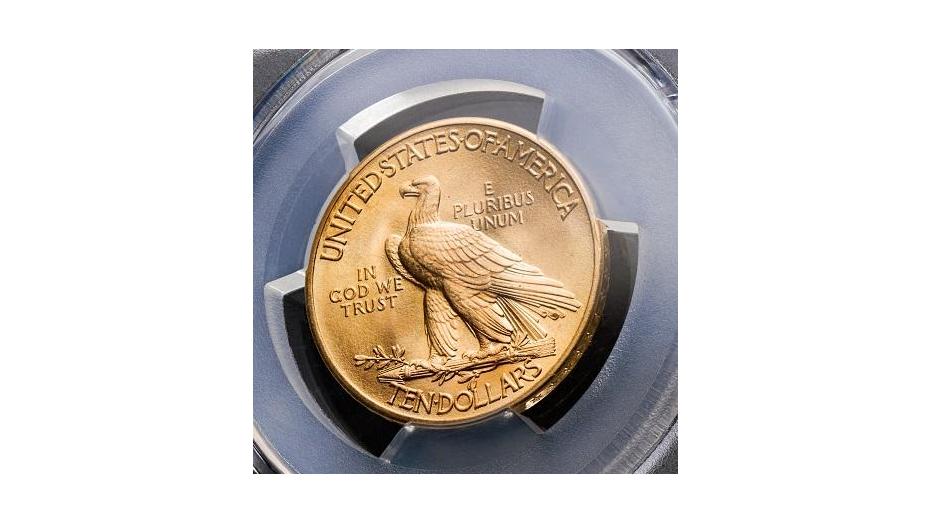Saint-Gaudens' Gold Eagle: The $10 Indian Head
In 1904, President Theodore Roosevelt made his dislike for the circulating coinage of America clear in a letter to Secretary of Treasury, Leslie Mortier Shaw. This infamous letter overtly criticized America’s coinage, calling it “of atrocious hideousness.” Fortunately, Roosevelt knew just the man to produce new coins that would be worthy of the United States: Augustus Saint-Gaudens.
Despite fighting declining health due to cancer at the time, Saint-Gaudens was able to complete two coin designs as requested by President Roosevelt: the $20 Saint-Gaudens Gold Double Eagle and the $10 Indian Head Gold Eagle. While the Gold Eagle’s obverse, depicting Lady Liberty wearing a Native American-style feather headdress is undeniably beautiful, the coin’s reverse belongs to a fascinating design lineage that can be traced all the way back to ancient Egypt.
The reverse of the $10 Indian Head depicts a bald eagle perched atop a sheaf of arrows that is entwined by an olive branch. With its head held high, this impressive American eagle projects an aura of power. This stunning rendition serves as a fitting symbol for the United States at a time when its strength was equal to that of the strongest civilizations in world history. Although the release of the Indian Head Gold Eagle in 1907 was the first time that many people saw this design, it had actually been used by Saint-Gaudens multiple times in the past.
An earlier representation of this same eagle can be seen on the original reverse of the 1892 Columbian Exposition medal. Unfortunately, this reverse was never officially released and there is only one example known to exist. This design exhibits a young figure representative of America, holding a shield that displays an eagle that is undeniably reminiscent of the eagle on the Indian Head Gold Eagle. Twelve years later, this eagle was used by Saint-Gaudens once again for the reverse of the inaugural medal of twenty-sixth President Theodore Roosevelt.
As is often true in the world of art, no piece is completely original. Saint-Gaudens’ Indian Head Gold Eagle reverse design is no different. The true roots of the $10 Indian Head’s reverse lie in a series of ancient Egyptian coins struck during the reign of Ptolemy I. These coins depicted an eagle in a near-identical pose to that used by Saint-Gaudens over two thousand years later. While the design of the Ptolemaic coin is much cruder and not as artistically refined, the relation between the two coins is blatant. This connection comes as no surprise, as both Saint-Gaudens and Roosevelt were known for their fascination with the coinage and artistry of ancient civilizations.
With such historical significance behind Saint-Gaudens’ $10 Indian Head, it is no wonder why this impressive coin is still lauded as one of the most stunning to be produced by the U.S. Mint. Rare Collectibles TV is proud to offer several stunning examples of $10 Indian Heads.






